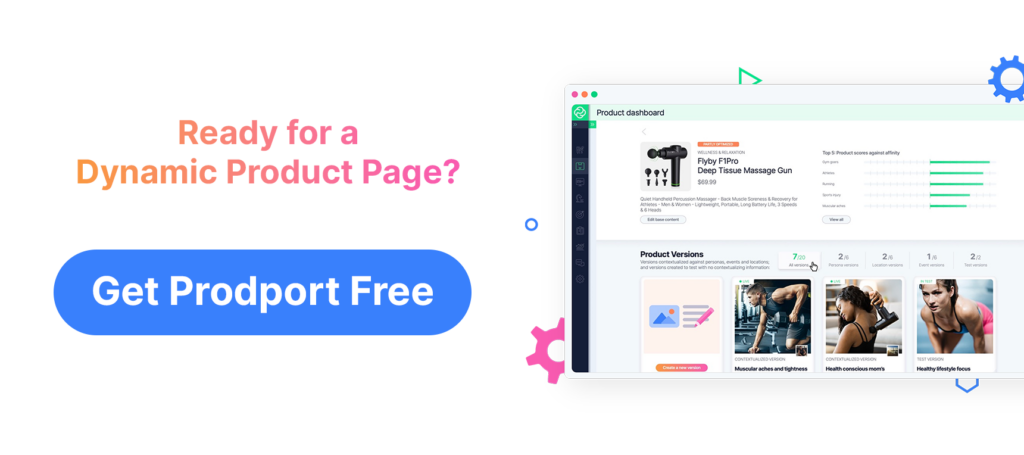Ecommerce has transformed the way businesses reach customers and opened up endless possibilities for growth. Getting it right can be the key to victory, but, as it happens – easy to say and hard to do.
That’s why we’re here.
In this comprehensive guide, we’ll take you through the most important steps of setting up and running a successful ecommerce business. We start with identifying your niche and end with monitoring and analyzing to help you take care of everything.
Are you ready for the potential of ecommerce and want to elevate your business above the competition?
If so, enjoy your reading.
Key takeaways
- To get started in ecommerce, you should learn the fundamentals of ecommerce first.
- The steps you need to take are: identify your niche, carry out market research, develop a business plan, choose your name, find suppliers, register your company & domain, build your website, optimize for SEO, set up payments, develop strategy, manage inventory, establish customer service policy & refund policy, create a marketing campaign, monitor activities and adapt to changing demands.
- To find your way in ecommerce, it’s necessary to combine strategic planning, execution, and continuous adaptation. It’s not enough to build a business and leave it without care.
How to get started in e-commerce?

The beginning can be difficult, especially for those who have never dealt with this sector. But, of course, there are universal steps you can take to start an ecommerce business.
For example, you need to understand your target audience and develop a robust marketing and sales strategy. It will also be useful to build a strong online presence and efficiently manage orders, payments, and fulfillment for products and services online.
It may seem like a lot of responsibilities at once, but we’ve put together a step-by-step guide that covers everything.
These moves will guide you toward building a strong ecommerce business in the intensely competitive online market. If you want to find out, keep reading.
#1 Identify your niche
The first essential element to build your own ecommerce business is finding a niche that matches your interests, skills, and market potential. Ecommerce sales give many growth opportunities across different businesses like online stores, marketplaces, and auction sites, but you won’t get them if you don’t know what to do and for whom, right?
So, to determine your niche, you can:
- identify your passions and strengths,
- research the potential profitability of the market,
- investigate your competitors and determine market gaps that your business can address,
- select a niche that capitalizes on your unique selling points.
You may think that you don’t want to waste your time on such nonsense, but thanks to these steps, you’ll do better and thrive in the ecommerce industry.
#2 Market research
Then comes the time to analyze your target audience and the competition – this is also a must for your ecommerce business’s success. To this end, conduct market research that will allow you to gain insights into customer preferences, industry trends, and potential opportunities for growth.
Collecting and analyzing data in this way won’t let you lose at the start and allow you to make wise decisions about:
➡️ products,
➡️ pricing,
➡️ and promotional strategies.
To best evaluate your online business idea, you need to study your competition, scrutinize its pros and cons, and determine ways to make your business model stand out from theirs. Also, try to obtain feedback from potential customers or ask your friends to do so. This can be helpful insofar as it will provide valuable insights into their needs and preferences, refine your offerings, and tailor your marketing efforts accordingly.
#3 Choose a business name

An integral part of your company is its name, so choose the right one at this stage. It will help you create a strong brand identity. Your business name should resonate with your audience and reflect your brand’s values and personality.
To be sure your chosen name is available, you can, for instance:
- check with the Secretary of State or state business filing agency in your jurisdiction,
- visit the county clerk’s office to see if the name has been registered locally,
- search the Federal Trademark Database,
- browse the search engines to make sure it is not already in use.
But how to choose a good name for your ecommerce venture?
Maybe try these ideas:
💡 Carry out market research and collect feedback.
💡 Use online business name generators.
💡 Define your brand values and target audience to create a name that aligns with your business.
💡 Experiment with wordplay, industry-specific terminology, alliterations, or geographic references.
💡 Keep the name short, simple, and scalable.
#4 Business plan development
The next phase of your ecommerce venture is the development of a business plan. It should outline, among others, your goals, strategies, and financial projections. This plan is like a roadmap to bring your ideas to fruition.
As of now:
- describe what your company is, why you want to build it, what market it operates in, and for whom,
- define realistic goals,
- build strategies and set a timeline for achieving them,
- make cost estimates and define how much money you will have to put in and how much you will have to raise,
- consider what threats you may face and how to overcome them,
- think ahead – e.g., what do you want to achieve in 5 years,
- be aware of the legal requirements in your area and incorporate them into your plan,
- think about online marketing and logistics for shipping products,
- consider the unique aspects of ecommerce businesses, such as website design, to further illustrate your plan.
An initial plan for your company like this one will allow you to move forward and not forget the gut idea. This is really a necessary foundation.
#5 Register your business
The subsequent step is to register your venture with suitable government bodies and secure the required permits and licenses. In the United States, you can choose from a variety of legal structures, such as sole proprietorship, partnership, Limited Liability Company (LLC), corporation, and cooperative.
The registration process often entails the following:
👉🏼 Choosing a business format.
👉🏼 Determining a location for your venture.
👉🏼 Registering your business name.
👉🏼 Registering with the Internal Revenue Service.
👉🏼 Getting registered with relevant state and local bodies.
👉🏼 Obtaining any required licenses and permits to operate your ecommerce business legally.
#6 Register your domain
Now you need to choose your domain name and register it. When registering, choose one that is easy to remember, relevant to your business, and free of numbers or hyphens. An unforgettable one will be crucial for a solid online presence.
The process for registering a domain name is quite easy and typically involves:
- selecting a domain registrar,
- searching for available domain names,
- providing personal and payment information,
- choosing the registration length,
- submitting the registration form,
- verifying ownership.
The domain name may be the same as the business name, but it doesn’t have to be. The only important thing is that both should be consistent and memorable.
#7 Establish supplier relationships
The next stage is about looking for suppliers. Establishing robust relationships with them is so vital for your store performance, product quality, and even competitive pricing. Thus, invest your time and effort into cultivating strong ties.
To do so, create bonds with them based on open communication, collaboration, and loyalty, and prioritize long-term partnerships. Then, you’ll get more valuable contacts and deliver high-quality products for your customers.
#8 Build your eCommerce website
Now that you have basic knowledge, names and suppliers, and registered business, move on with the website. Construct a visually pleasing and easy-to-use ecommerce store, and provide a smooth online shopping experience for your customers.
Effective design enhances your brand image, improves the overall customer experience, and increases the likelihood of repeat business and positive word-of-mouth referrals, so it’s worth the effort.
During the designing phase:
💻 focus on creating an intuitive user interface,
💻 incorporate high-quality visuals and engaging content,
💻 and optimize the site for both desktop and mobile devices.
You can also take advantage of various tools to enhance your ecommerce site and store.
For example, Prodport lets you build and optimize product pages tailored to different audiences and personalize your product content. It also offers comprehensive analytics and connects with many ecommerce platforms or CMSs.

Despite the fact that you’ve already built the site, have a nice design, and added products, don’t launch it yet because there are still some important elements ahead of you.
#9 Optimize for SEO
SEO can bring you closer to your dream e-commerce success. Good search engine optimization practices include identifying relevant keywords, crafting comprehensive product descriptions, and analyzing competitor research.
These strategies with continuous monitoring can do so much good for your website’s performance:
- drive organic traffic,
- improve brand visibility,
- improve site ranking in search engine results pages (SERPs)
- and ultimately increase online sales.
You will also go out to potential customers with your products and services.
#10 Set up payment processing
Reliable and streamlined payment processing is a key element of any thriving ecommerce venture, as it caters to a wider customer base and instills trust in online stores. It accepts a variety of payment methods from customers, provides a convenient shopping experience, and boosts customer satisfaction.
Popular payment processing options include Square, Stripe, PayPal, and VizyPay.
Here, you need to select a payment processing provider, create an account, and integrate the provider into your ecommerce website.
#11 Create shipping strategy
Once you’ve chosen your payment processing provider, it’s time to take care of your shipping. Here, vital is a good strategy for fulfilling customer expectations and guaranteeing prompt delivery of products.
Thus, to develop it, consider factors such as shipping costs, delivery times, and carrier options. If you balance all of these – you will maintain greater satisfaction.
Don’t forget to monitor key performance indicators to evaluate the effectiveness of your shipping plans and make adjustments when needed. Provide reliable and cost-effective shipping, and you’ll strengthen customer trust and encourage repeat purchases.
#12 Build a customer service policy
The next key component of ecommerce businesses is a successful customer service policy. Prioritizing responsiveness, professionalism, and problem resolution ensures that your customers receive timely and efficient support.
So, to create a customer service policy that meets these standards, establish clear expectations for your customer service team and emphasize the importance of quality over quantity.
What’s more, provide multiple customer service contact options, like:
📧 email,
📞 phone,
🗨️ and live chat,
to cater to different customer preferences.
Thanks to focusing on customer needs and delivering exceptional support, you’ll build trust and loyalty among your customer base.
And what will this give you? As much as long-term success for your ecommerce business.
#13 Implement a return and refund policy
Have we finished yet? Absolutely not!
Now craft a transparent and equitable return and refund policy. To implement a great one, you should:
- Clearly indicate the time frame for returns and refunds.
- Specify the condition in which products should be returned.
- Outline the process for initiating a return or refund.
- Offer options for exchanges or store credit.
Communicate any restocking fees or shipping costs associated with returns, and use simple and concise language so every client can understand you.
#14 Use inventory management systems
The challenge can be effective inventory management. It can be difficult at first, but with time, you’ll be able to avoid stockouts and overstocking, and you will guarantee a smooth order fulfillment process.
Also, this is where inventory management systems can help. They allow you to track inventory levels, sales, and order fulfillment in real time.
Integrate such a system into your ecommerce operations, and you’ll:
- gain better control over your stock,
- reduce costs,
- and enhance the overall customer experience.
Moreover, customers will receive their orders promptly and accurately.
With Prodport, you will always provide up-to-date information about your products. You can use attractive visuals and constantly improve them to surprise your audience.

#15 Prepare marketing and promotion
As the ecommerce industry grows and expands, firms need to stay ahead of the competition – this includes you. And digital marketing strategies are here to help with a range of marketing tools, such as:
- social media,
- video marketing,
- email marketing,
- etc.
This type of marketing, if it’s tailored to your target audience and continuously refined, can increase the effectiveness of your operations. What’s more, it can give you valuable feedback and insights.
Especially incorporating social media marketing into your ecommerce strategy is an effective method to interact with customers. Various social media platforms, like Facebook, Instagram, TikTok, and Pinterest, allow you to contact and engage with a wider audience and tailor your marketing efforts.
#16 Monitor and adapt
Once the site is up and running and suppliers, payments, shipping, returns, client communications, promotion, and inventory management are ready, you can move forward with the grand opening.
Your work isn’t over because now it’s all about monitoring, putting out fires, and adjusting to customer requirements. After all, this is what allows you to improve.
Some important metrics to track include:
- Total Sales,
- Average Order Value,
- Conversion Rate,
- and Customer Lifetime Value.
Monitor these metrics, identify trends, measure the effectiveness of your marketing efforts, and find areas where you can optimize your operations. Also, get data and insights from different locations and view them in one panel in Prodport.
And, of course, make the necessary changes. This proactive approach to ecommerce will help ensure the long-term success of your online business.
Conclusion
If you want to mean something in an online marketplace, you need to adjust planning, implement operations quickly, and adapt to new conditions. Ecommerce enables businesses to capitalize on the vast opportunities, but it also requires a lot of effort. Nevertheless, the taste of victory is a feeling only in its own right that will reward everything.
As you follow the steps outlined in our comprehensive guide, you’ll be well on your way to founding a prospering ecommerce company.
Now, it’s time for you to take the first step toward building an online store and transform your dreams into reality.
FAQ
How do I start selling on ecommerce?
To start selling on ecommerce, you should: discover your niche, conduct market research, create a business plan, select a name, register your company and domain, identify suppliers, construct your website, enhance its SEO, configure payment methods, formulate shipping strategy, oversee inventory, establish customer service and refund policies, initiate a marketing campaign, monitor operations, and adapt to evolving demands.
Why is the appearance and performance of my website so important?
The appearance and performance of your site are so important because they determine the shopping experience of your online store. Moreover, effective design improves your brand image, helps browsing, and increases recurring customers. Integrating tools such as Prodport further enhances customer satisfaction and creates a personalized experience.
What are the key elements of an effective customer service policy in ecommerce?
The key elements of an effective customer service policy in ecommerce include setting standards, placing customer needs first, offering prompt and efficient support, clarifying shipping/return policies, and providing multiple contact options.



